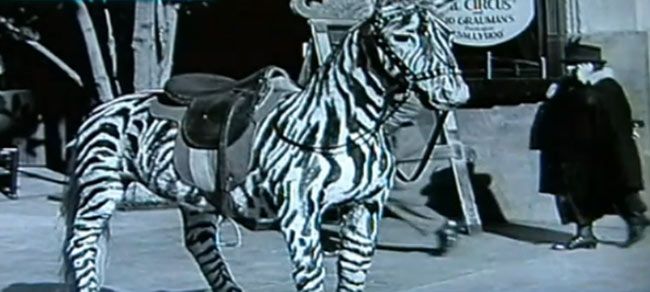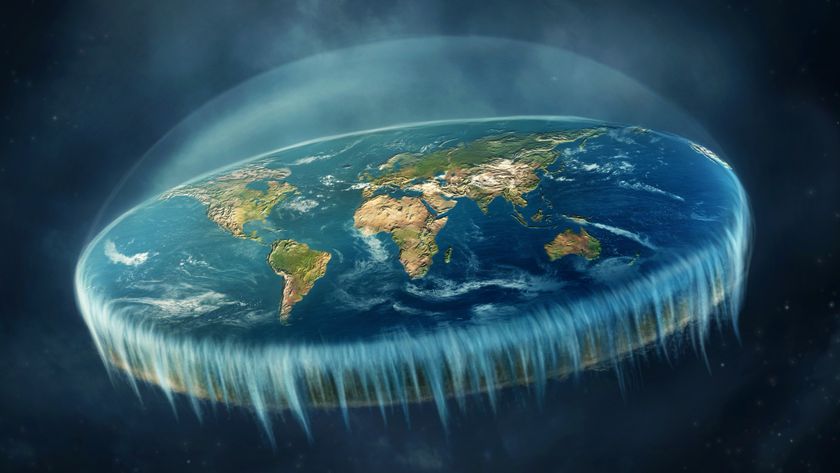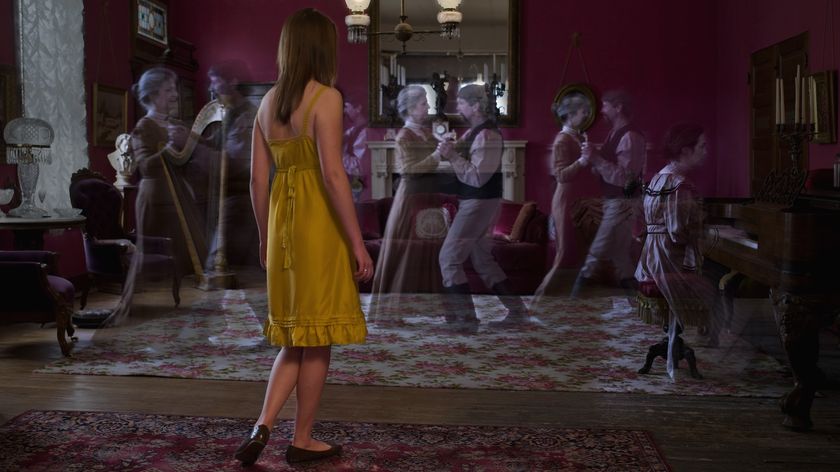'Time Traveler' May Just Be Hard of Hearing

Speculation about a supposed time traveller talking on her cell phone at a 1928 Hollywood film premiere has sped across the Internet faster than a DeLorean time machine. But a less mind-bending possibility is that she was just hard of hearing, experts say.
The story first surfaced in a YouTube video that includes film footage showing the 1928 premiere of the Charlie Chaplin film "The Circus" at Grauman's Chinese Theatre in Hollywood, Cali. Irish filmmaker George Clarke points out a woman in the old footage holding what he describes as a cell phone against her ear. The shape implies the woman is a time traveler using a modern mobile device rather than an ear trumpet, Clarke said.
What Clarke didn't consider was that a simple ear trumpet could still explain it all, said hearing device historians, who provided LiveScience with images of sample ear trumpets for comparison. [See the ear trumpets]
"As you can tell from these, old-fashioned mechanical or resonating hearing aids were not necessarily long and rounded," said Philip Skroska, an archivist at the Bernard Becker Medical Library of Washington University in St. Louis. "Short, compact rectangular forms were not unusual."
((ImgTag||right|null|null|null|false))In other words, they could look something like a cell phone to imaginative YouTube viewers in the 21st century. [Time Travel Machine Outlined]
Listen to this
19th-century resonator hearing aids such as ear trumpets were still made in large numbers well into the first decades of the 20th century, Skroska explained, and the basic designs didn't change much aside from incorporating newer, plastic-like materials.
Sign up for the Live Science daily newsletter now
Get the world’s most fascinating discoveries delivered straight to your inbox.
"Besides, I would expect this woman to be over 50 years old, so using a late 19th century design in 1928 would not be a stretch I think," Skroska said.
Electronic hearing aids also existed before World War II, but in fewer numbers.
"Now, I can't really explain why the woman appears to be talking (other than yelling at the man who quickened his pace ahead of her)," Skroska said in an e-mail. "But I think it's fair to say it would be a hasty judgment to dismiss the possibility that it was a hearing aid she was holding up to her ear."
This explanation might be less exciting than the time travel theory, but it avoids a huge number of theoretical and practical problems associated with sending someone into the past.
Time travel issues
Theorists have kicked around a few scenarios for how people might travel to the past, said Brian Greene, author of the bestseller, "The Elegant Universe" (Vintage Books, 2000) and a physicist at Columbia University, during a past LiveScience interview. "And almost all of them, if you look at them closely, brush up right at the edge of physics as we understand it. Most of us think that almost all of them can be ruled out."
One theory focuses on wormholes – hypothetical tunnels that connect two regions of space-time that could represent two parts of the same universe, or even completely different universes.
But creating a wormhole that punches through space-time looks far beyond anything humans can accomplish with today's technology, said Michio Kaku, author of "Hyperspace" (Anchor, 1995) and "Parallel Worlds" (Anchor, 2006), and a physicist at the City University of New York, in a past interview.
Humans would need to somehow harness the energy of a star or possibly matter with negative energy density – an exotic and hypothetical form of matter with the energy of less than nothing. Even if such matter exists, there would likely not be enough of it for a time machine to harness.
Another time travel theory relies upon cosmic strings – narrow tubes of energy that span the entire length of the expanding universe. Predictions suggest that such regions could contain huge amounts of mass and warp space-time in a way that allows for time travel.
The cosmic strings either run on infinitely or form loops "like spaghetti or SpaghettiO's," said Richard Gott, author of "Time Travel in Einstein's Universe" (Mariner Books, 2002) and an astrophysicist at Princeton University. Two such strings parallel to one another could perhaps bend space-time enough to make time travel possible – but it's a challenge that only a "super civilization" might try, Gott explained in a past interview.
Not what it seems
Any pathways that could theoretically allow for time travel between points in space-time have never been seen, according to Charles Liu, an astrophysicist at the City University of New York, College of Staten Island, and co-author on the book "One Universe: At Home in the Cosmos" (Joseph Henry Press, 1999).
Besides being "very unlikely to exist at all," such pathways are "even less likely to be able to transport anything larger than a subatomic particle intact," Liu said.
People of the present also have a track record of trying to fit what they see to known patterns, Liu pointed out. He added that it was no surprise for 21st-century people to see what they think is a cell phone in 1928, just as people claimed to see faces on Mars or the Virgin Mary in toast.
"So I'm going to bed tonight confident that the person was not a time traveler from the future," Liu said in an e-mail yesterday.
- Top 10 Time Travel Tales
- Twisted Physics: 7 Recent Mind-Blowing Findings
- Video: Can You Time Travel?












